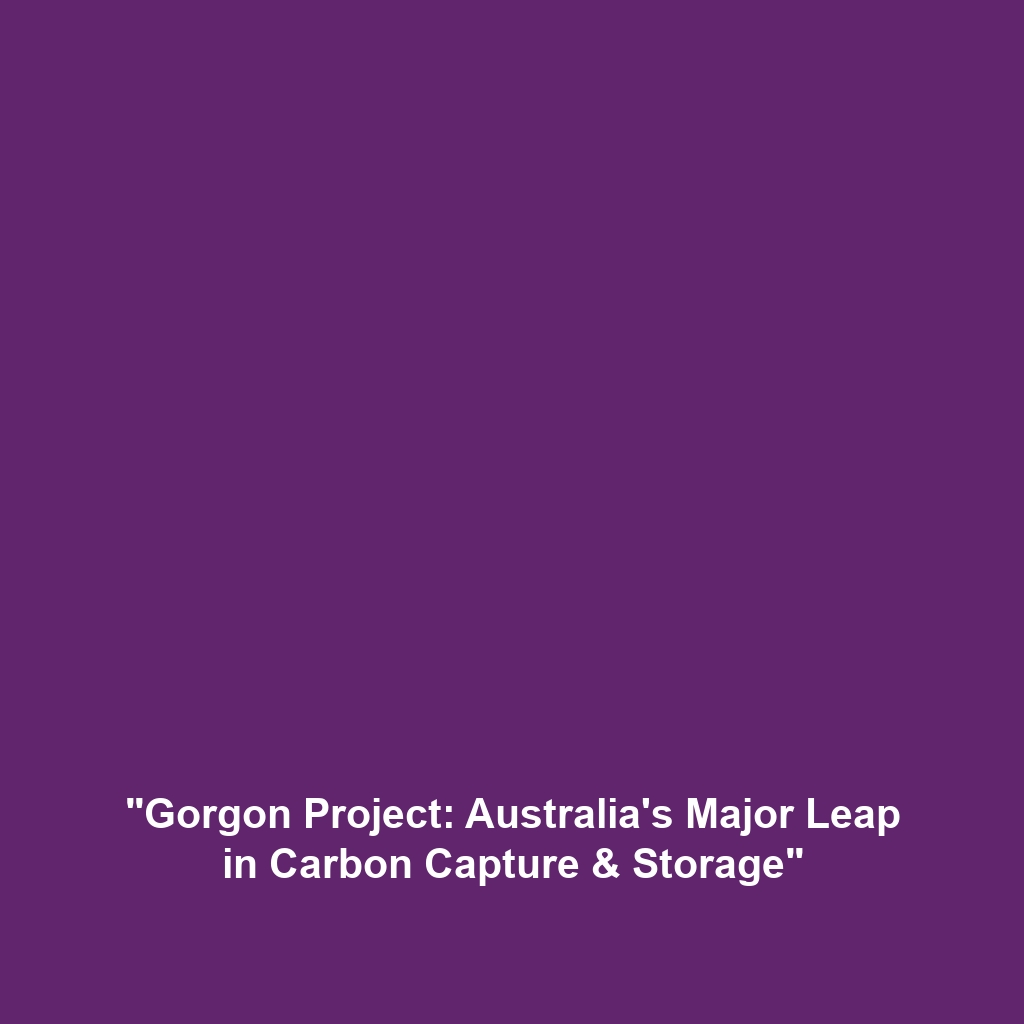Alternative CO2 Transportation Methods: Ships and Trucks in Carbon Capture & Storage (CCS)
In the realm of Carbon Capture & Storage (CCS), the transportation of captured CO2 is critical to mitigate climate change. While pipelines are commonly used for large-scale transport, they are not always feasible, especially in remote or environmentally sensitive areas. Thus, alternative methods such as transporting CO2 by ships and trucks have emerged as viable solutions. This article delves into these methods, highlighting their significance within the broader CCS framework.
Key Concepts of CO2 Transportation
Understanding the intricacies of transporting CO2 where pipelines are impractical involves several key concepts:
- Carbon Capture: The process of capturing carbon dioxide emissions from sources like power plants and industrial processes before it enters the atmosphere.
- Storage Solutions: Identifying secure geological formations for long-term storage after transportation.
- Transport Logistics: The planning and execution of moving captured CO2 via ships or trucks, considering safety, efficiency, and environmental impact.
Transportation Methods Explained
When pipelines are not an option, two main methods for CO2 transport come into play:
- Maritime Transport: Utilizing specially designed ships to transport liquefied CO2 across oceans and seas.
- Road Transport: Employing tanker trucks to move CO2 overland to storage sites, ensuring accessibility in less developed or urban areas.
Applications and Real-World Uses
Understanding how these transportation methods fit into the framework of Carbon Capture & Storage is crucial. Notable applications include:
- Shipping CO2 for Enhanced Oil Recovery (EOR): Captured CO2 is transported to oil fields where it is injected to enhance oil extraction.
- Truck Transport in Industrial Regions: In areas lacking pipeline infrastructure, trucks can efficiently deliver captured CO2 to nearby geological storage sites.
- International Shipping: Global collaboration through maritime transport can facilitate international CCS projects, expanding the reach of captured CO2.
Current Challenges
Despite the promise of alternative CO2 transportation methods, several challenges persist:
- Economic Feasibility: Higher costs associated with shipping and trucking compared to pipeline transport.
- Regulatory Hurdles: Compliance with various national and international regulations can complicate operations.
- Safety Concerns: Ensuring the safe handling and transport of liquefied CO2 to prevent leaks or accidents.
- Infrastructure Limitations: Inadequate port and road facilities may hinder efficient transport operations.
Future Research and Innovations
Looking ahead, research is focused on enhancing the efficiency and viability of CO2 transport via ships and trucks. Some of the exciting areas of innovation include:
- Next-Gen Shipping Designs: Development of ships specifically designed for optimal storage and transport of CO2.
- Advanced Routing Technologies: Use of AI and machine learning to optimize transport routes and reduce emissions during transit.
- Dual-Mode Facilities: Infrastructure capable of handling both pipeline and alternative transport methods seamlessly.
Conclusion
In summary, the transportation of CO2 by ships and trucks is an essential aspect of the broader Carbon Capture & Storage (CCS) strategy, particularly in regions where pipelines are not feasible. As the focus on mitigating climate change intensifies, exploring these alternative transportation methods will become increasingly crucial. Stakeholders in the CCS field are encouraged to collaborate, innovate, and push the boundaries of current technologies to ensure efficient and safe CO2 transport. For further reading, check out our articles on Carbon Capture Overview or International CCS Projects.







